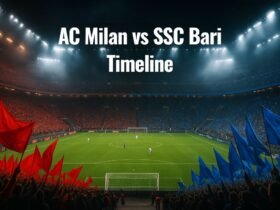An Overview of LASIK and RLE Procedures
Getting LASIK in Chicago is an increasingly common option for those seeking freedom from glasses and contact lenses. LASIK, or Laser-Assisted In Situ Keratomileusis, uses a laser to reshape the cornea and improve vision. On the other hand, RLE, or Refractive Lens Exchange, involves replacing the natural lens of the eye with an artificial intraocular lens (IOL). Each procedure has unique benefits and is suited to different patient needs and conditions.
How LASIK Works
Getting LASIK in Chicago involves the use of a specialized laser to create a thin flap on the cornea. This flap is lifted to reveal the underlying tissue, which is then reshaped with a laser to correct refractive errors such as nearsightedness, farsightedness, and astigmatism. The flap is then repositioned, and the cornea heals naturally within a few days. This procedure is known for its quick recovery, often allowing patients to return to normal activities within 24 to 48 hours.
Key Benefits of LASIK:
- 1. Quick Recovery: Most people experience improved vision within a day or two.
- 2. Minimally Invasive: The procedure involves a brief surgery with a low risk of complications.
- 3. Proven Effectiveness: Over 90% of LASIK patients achieve 20/25 vision or better.
Ideal Candidates for LASIK:
- 1. People aged 18 to 40 with stable vision prescriptions.
- 2. Those with nearsightedness, farsightedness, or mild to moderate astigmatism.
How RLE Works
RLE is more commonly associated with cataract surgery but is also used for vision correction in younger patients who are not candidates for LASIK. In this procedure, the eye’s natural lens is removed and replaced with an artificial IOL. The type of IOL can vary, with options including multifocal and accommodating lenses that aim to reduce or eliminate the need for glasses at various distances.
Key Benefits of RLE:
- 1. Effective for Presbyopia: Can address age-related vision changes, such as difficulty focusing on close objects.
- 2. Suitable for Severe Refractive Errors: Ideal for individuals with high degrees of myopia or hyperopia.
- 3. Permanent Solution: Unlike LASIK, which reshapes the cornea, RLE changes the lens, which can provide stable vision throughout a patient’s life.
Ideal Candidates for RLE:
- 1. Individuals over 40 experiencing presbyopia or cataracts.
- 2. Those with thin corneas or high prescriptions that make LASIK unsuitable.
Comparing the Two Procedures
1. Surgical Process:
- 1. Getting LASIK in Chicago typically takes less than 30 minutes and is performed on an outpatient basis. The procedure involves minimal discomfort and local anesthesia.
- 2. RLE is more complex and generally takes 15-30 minutes per eye. It involves anesthesia and may require a slightly longer recovery period compared to LASIK.
2. Recovery Time:
- 1. LASIK recovery is generally faster, with many patients achieving functional vision within 24-48 hours.
- 2. RLE, on the other hand, may require a week or more for initial recovery, with full stabilization taking up to several weeks.
3. Candidacy and Conditions Treated:
- 1. LASIK is suitable for individuals with stable vision prescriptions and is ideal for correcting nearsightedness, farsightedness, and astigmatism.
- 2. RLE is often recommended for individuals over 40 or those with advanced presbyopia, high prescriptions, or thin corneas that prevent them from being LASIK candidates.
4. Potential Risks and Complications:
- 1. LASIK risks include dry eyes, glare, halos, and undercorrection or overcorrection. However, complications are rare, and most are manageable.
- 2. RLE risks may involve infection, retinal detachment, or glare, particularly with multifocal IOLs. However, advancements in lens technology have significantly reduced these risks.
5. Long-Term Results:
- 1. LASIK can provide long-lasting results, with many patients enjoying improved vision for years. However, some individuals may require enhancement procedures over time.
- 2. RLE often results in permanent correction, as the IOL does not change over time. This can be particularly beneficial for presbyopia, as modern lenses can correct near, intermediate, and far vision.
Conclusion:
Deciding between getting LASIK in Chicago or opting for RLE depends on several factors, including age, eye health, and the type of refractive error. LASIK is an excellent option for younger individuals with stable prescriptions, while RLE is best for those with age-related vision changes or who do not meet LASIK candidacy criteria.
Both procedures come with their set of benefits, risks, and recovery expectations. Consulting with a qualified eye care professional is essential to evaluate your specific needs, vision goals, and health conditions. By discussing your unique case, you can make an informed decision that ensures the best possible outcome for your vision health.













